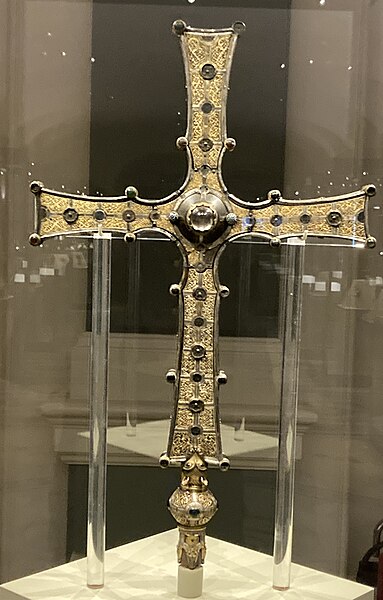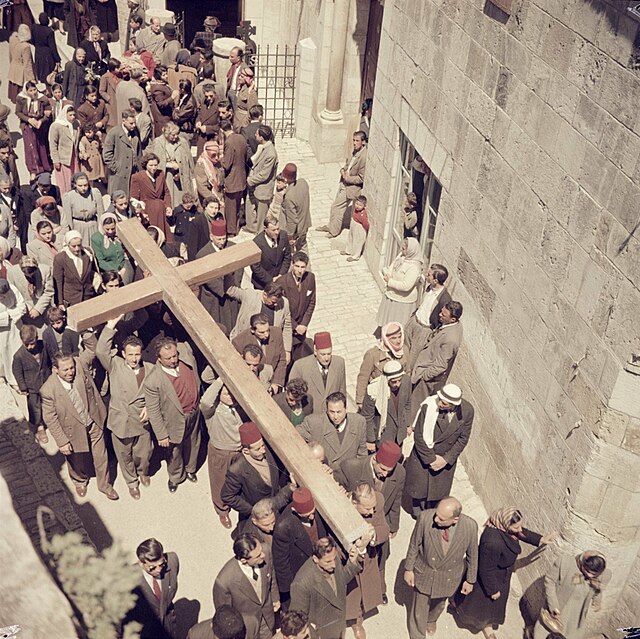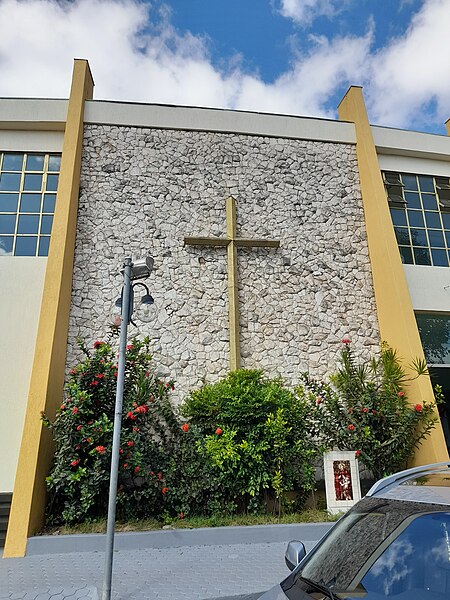A processional cross is a crucifix or cross which is carried in Christian processions. Such crosses have a long history: the Gregorian mission of Saint Augustine of Canterbury to England carried one before them "like a standard", according to Bede. Other sources suggest that all churches were expected to possess one. They became detachable from their staffs, so that the earliest altar crosses were processional crosses placed on a stand at the end of the procession. In large churches the "crux gemmata", or richly jewelled cross in precious metal, was the preferred style. Notable early examples include the Cross of Justin II, Cross of Lothair, and Cross of Cong.
The Cross of Cong, Irish, 12th century
A processional cross carried during the entrance procession of a Catholic Mass
Russian Orthodox Crucession with lantern, processional cross and banners.
Pilgrims carrying the cross on the Via Dolorosa
A crucifix is a cross with an image of Jesus on it, as distinct from a bare cross. The representation of Jesus himself on the cross is referred to in English as the corpus. The crucifix emphasizes Jesus' sacrifice, including his death by crucifixion, which Christians believe brought about the redemption of mankind. Most crucifixes portray Jesus on a Latin cross, rather than a Tau cross or a Coptic cross.
Crucifixion of Christ at the winged triptych at the Church of the Teutonic Order in Vienna, Austria. Woodcarvings by an anonymous master; polychromy by Jan van Wavere, Mechelen, signed 1520. This altarpiece was originally made for St. Mary's Church, Gdańsk, and came to Vienna in 1864.
A crucifix in the chancel of a Lutheran church
A crucifix in Brazil
The Marquis of Paraná, Prime Minister of Brazil lying in repose in 1856. In the background, candles and a metal crucifix.








